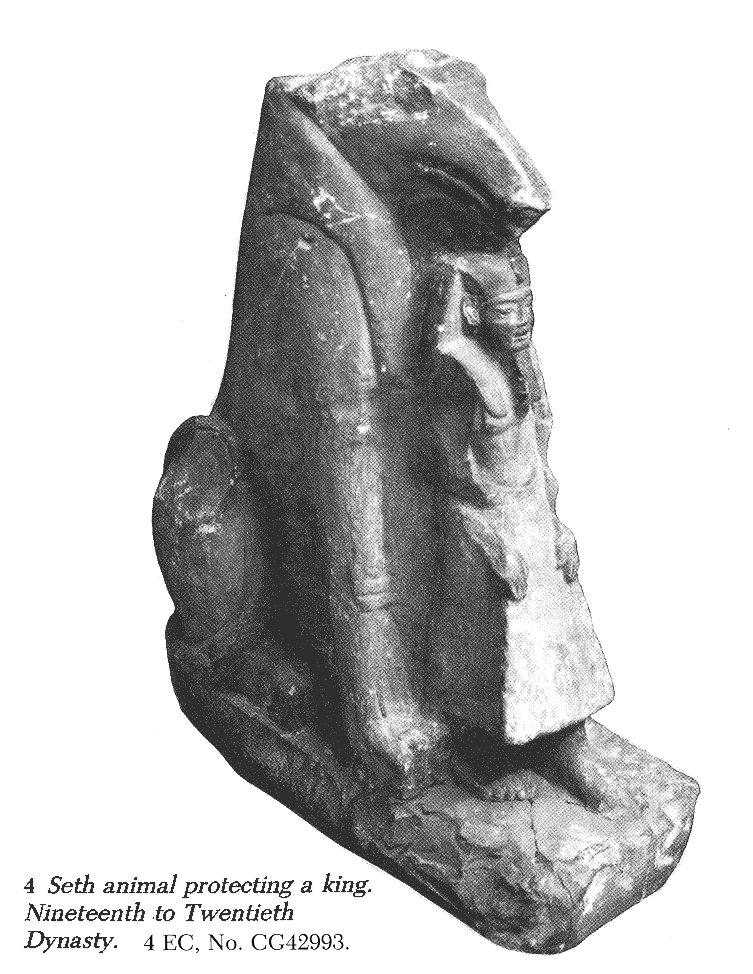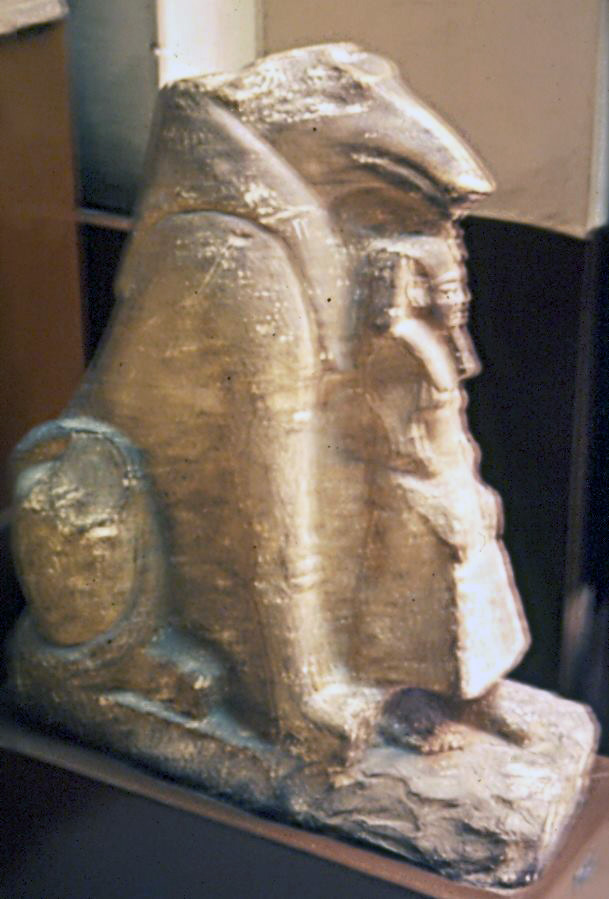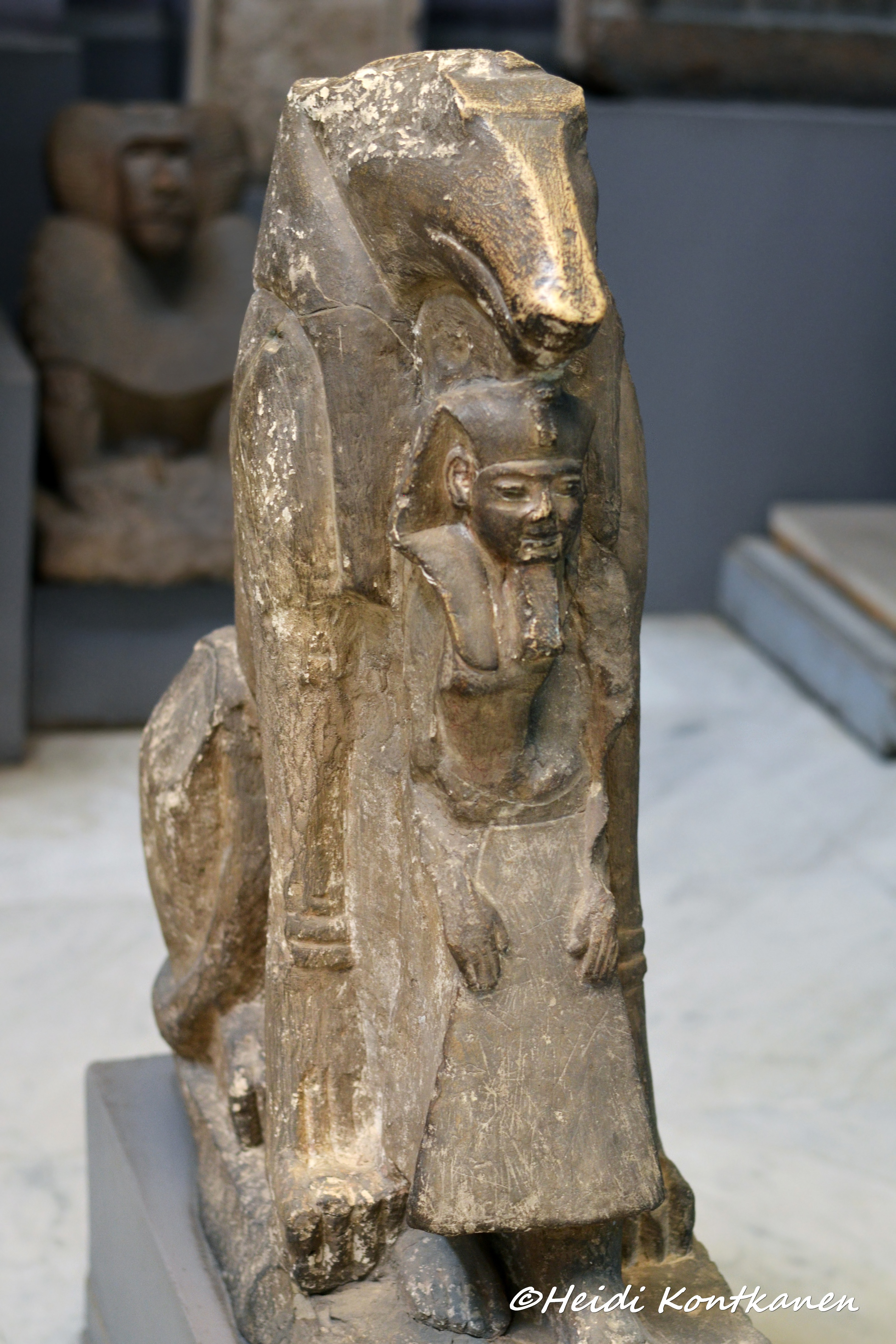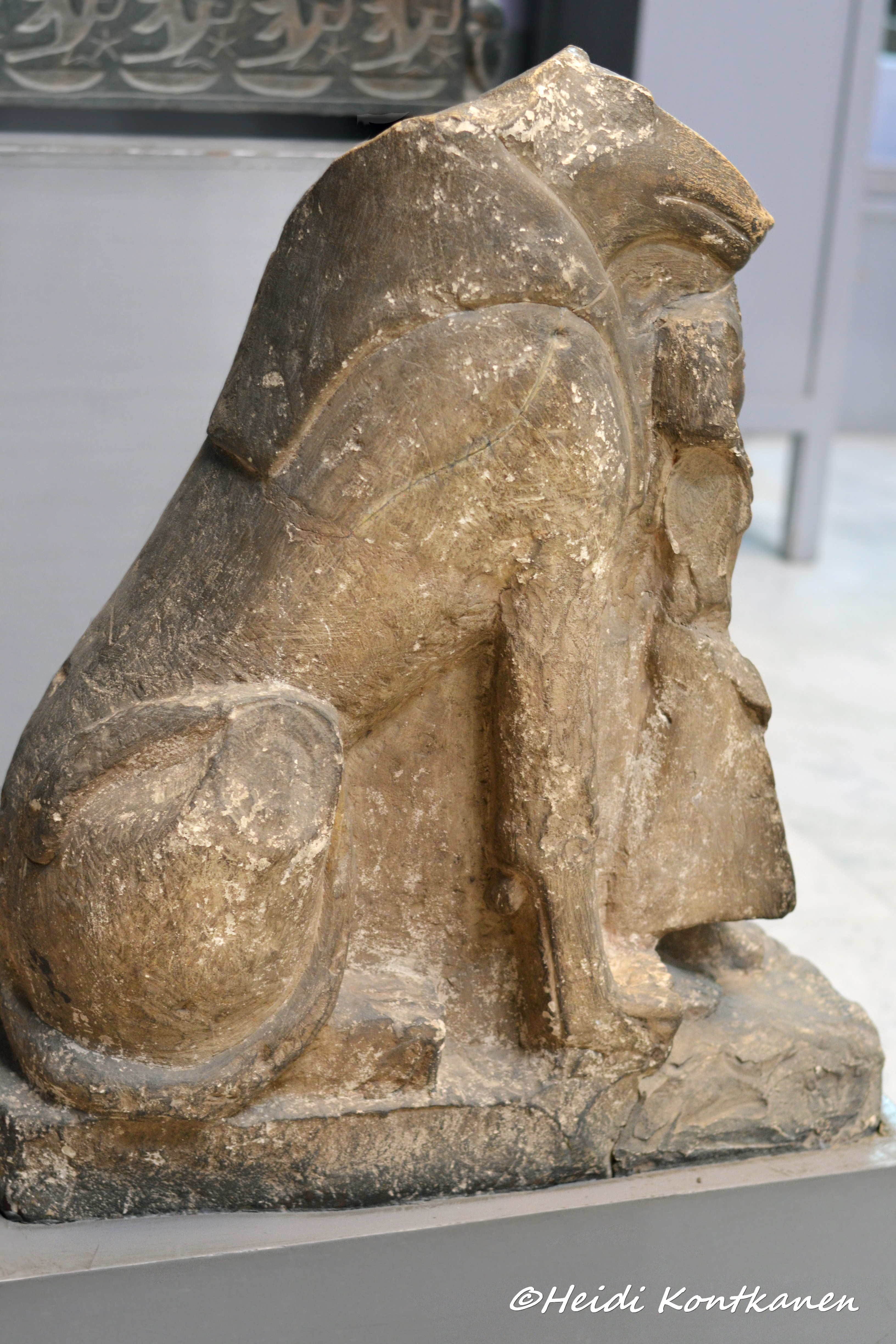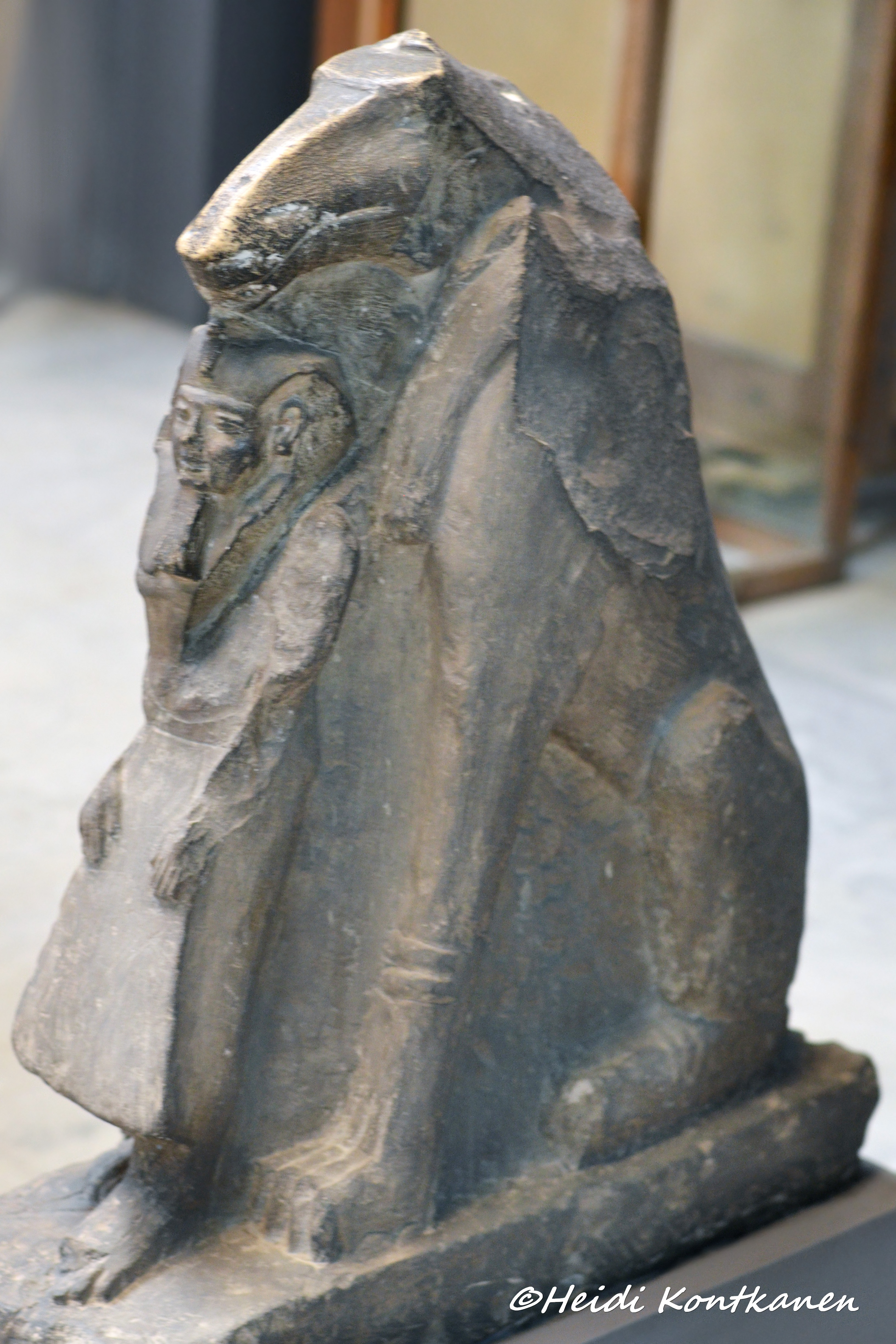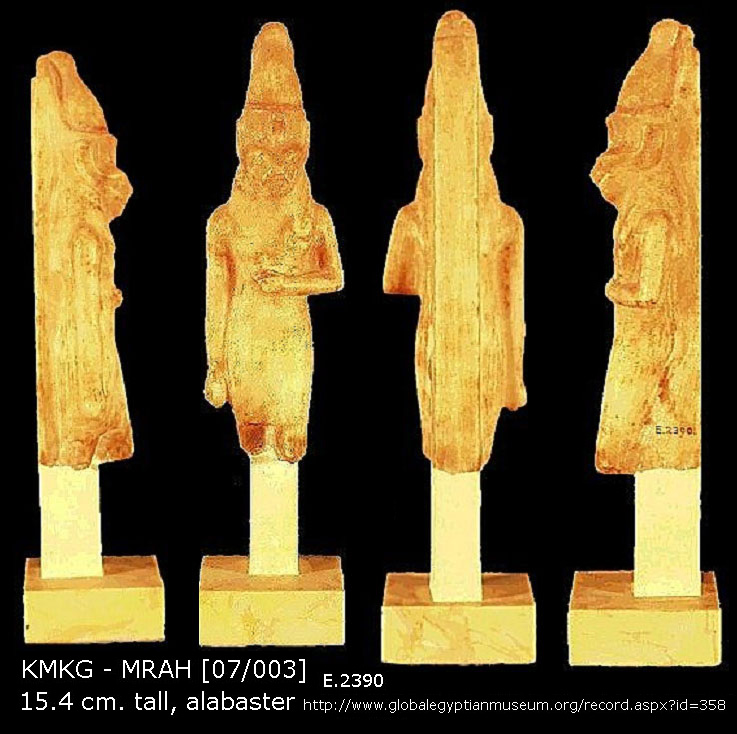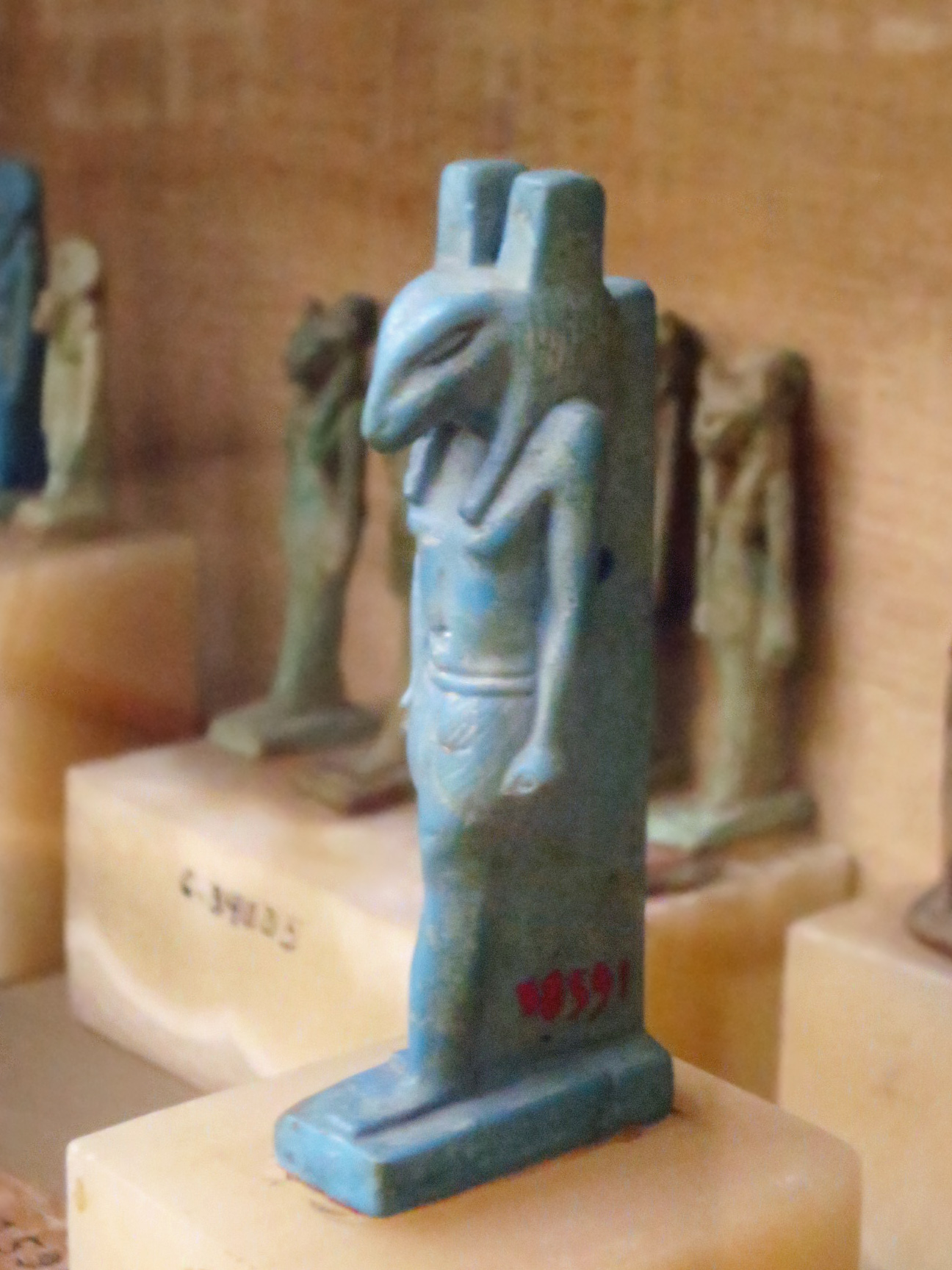|
The British Museum has an amulet with the Set animal in a similar pose:
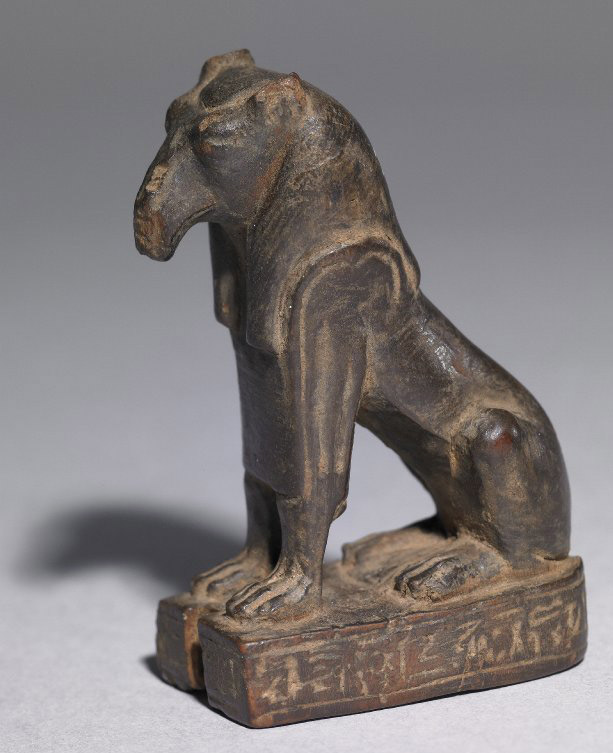
Wooden amuletic figure of a seated Seth animal, Ramesside Period
Width: 2.02 centimetres, Height: 5.82 centimetres, Depth: 3.93 centimetres
Registration number: 1899,0314.12
BM/Big number: 30460
Published: Andrews, Amulets of Ancient Egypt (1994): p.79
British Museum website description
"Wooden amuletic figure of a seated Seth creature; the edge of the
base(damaged) is inscribed with an offering formula to Seth." Carol Andrews mentions this offering formula is "naming the god with unusual epithets", but she does not elaborate further.
Not just the base is damaged, the ears and tip of snout have been lost. I try to imagine what it might have looked like when new:
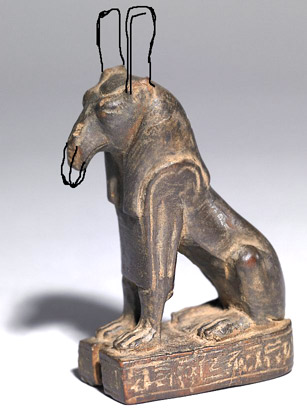

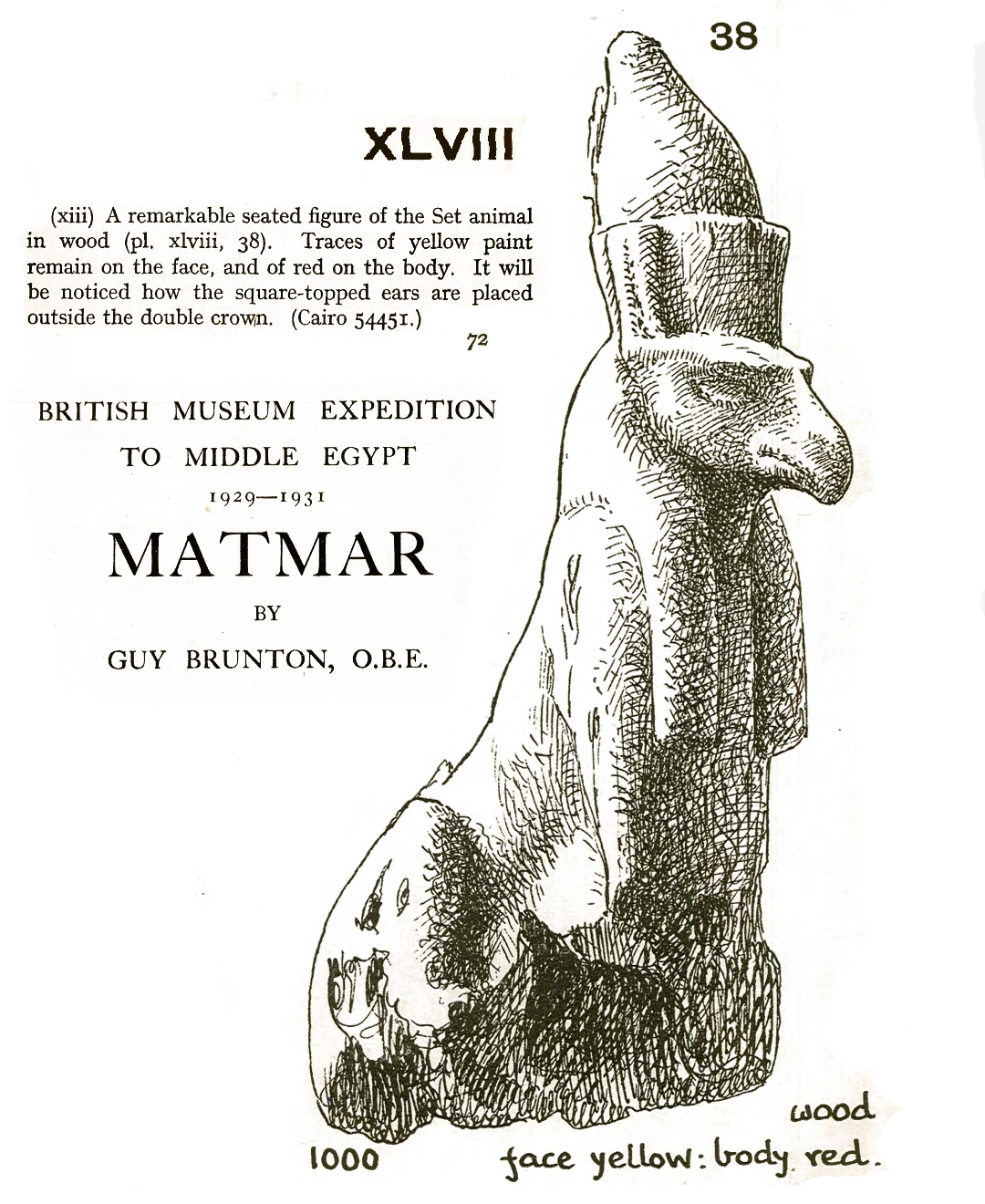
A statuette of Set found at Matmar, note he has the double crown.
Guy Brunton describes it: "A remarkable seated figure of the Set animal in wood (pl. xlviii, 38). Traces of yellow paint remain on the face, and of red on the body. It will be noticed how the square-topped ears are placed outside the double crown. (Cairo 54451.)"
Ramesses II had built a temple to Set in Matmar, and although it didn't survive, there is enough evidence that it was there. (Matmar: British Museum Expedition to Middle Egypt, by Guy Brunton, (Quaritch Ltd, 1948), page 72)
TeVelde gives a photo of a wooden statue of Set, this time, not in animal form, but seated on a throne, which seems to fit with these:

"Leiden A 423. Photograph of the Museum of Antiquities at Leiden"
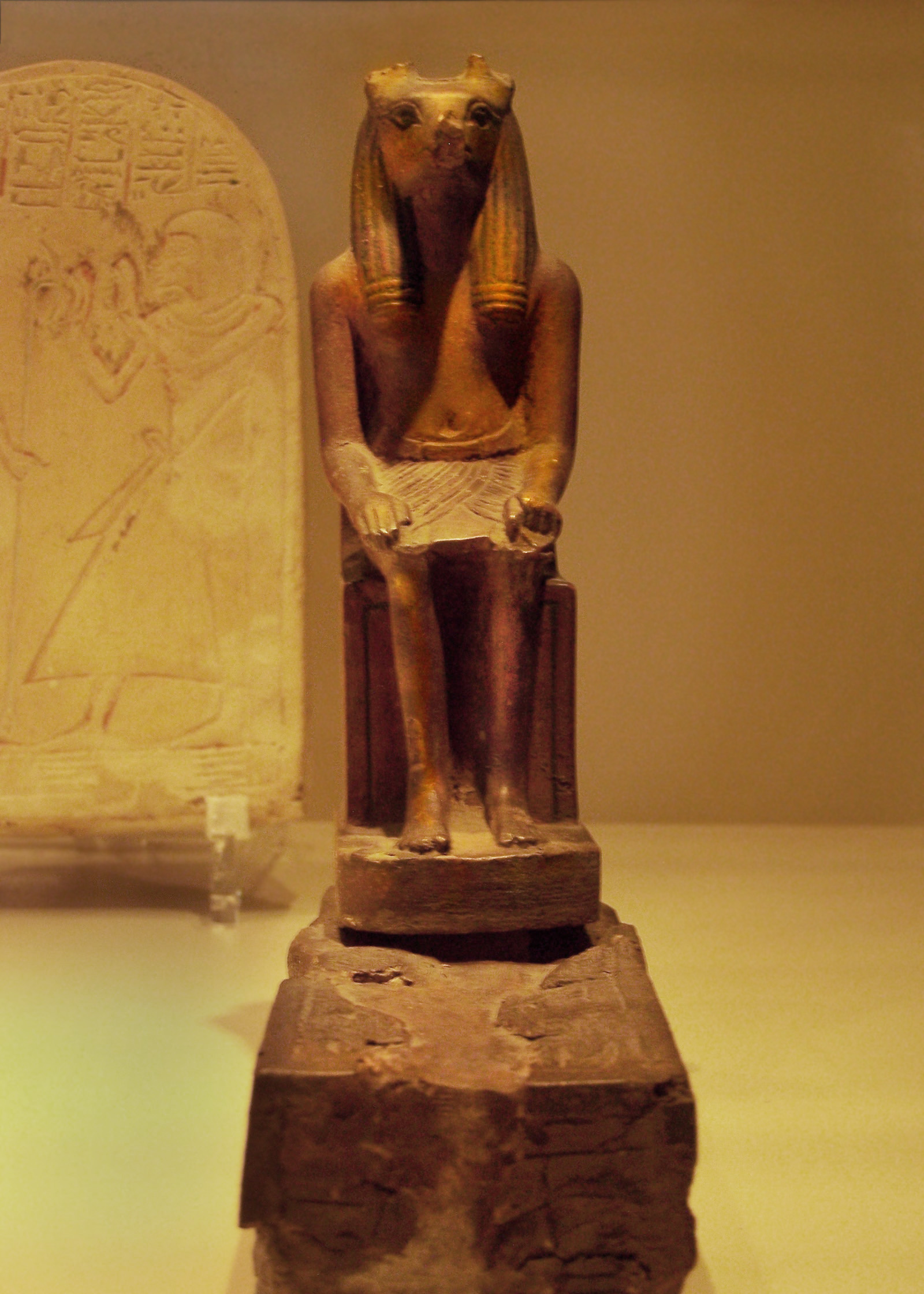
The stela to its left is Aapehty's stela which went to Leiden for an exhibit on "Egyptian Magic",
where Monique van der Veen photographed it there, and graciously shared the photos

© Monique van der Veen
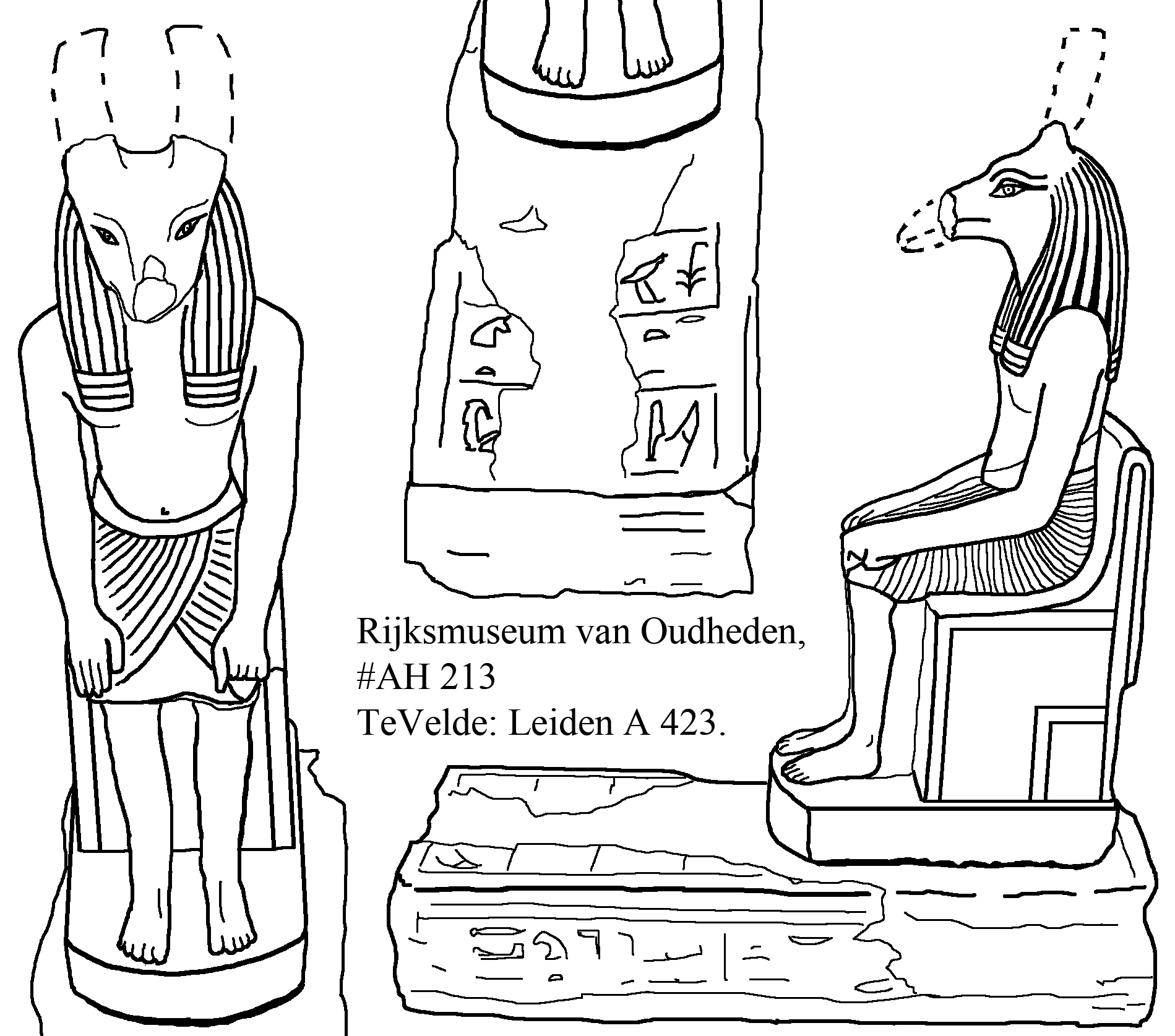
Here's a photo hard to read as it was scanned in black and white, but it is of a similar type statue, this one not from the Ramesside period, but much later in the 25th Dynasty:
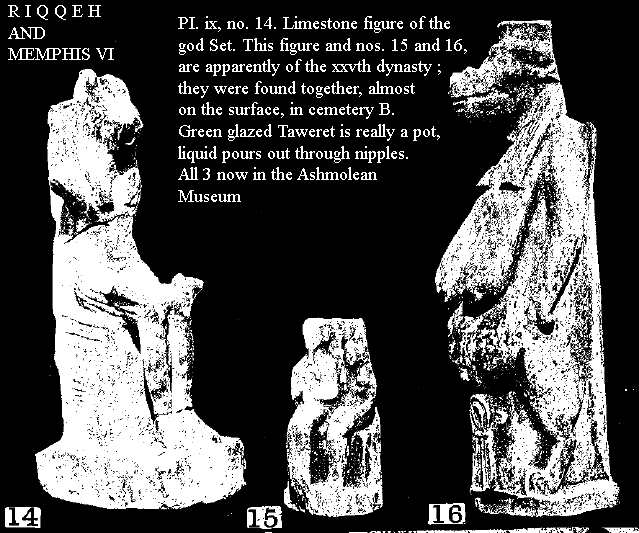
"PI. ix, no. 14. Limestone figure of the god Set."
"This figure and nos. 15 and 16, are apparently of
the xxvth dynasty ; they were found together, almost
on the surface, in cemetery B. It is very unusual to
find figures of this god so late...
PI. ix, no. 15. Small dyad of the gods Ptah and
Bast in glazed steatite.
PI. ix, no. 16. Green glazed figure of the goddess
Ta-urt. The figure is really a pot, so constructed
that when filled with water, it runs out through holes
in the breasts. Beneath the stomach is the Sa
amulet, which this goddess is usually seen holding
in the hand. The original is about 74 inches high.
Nos. 14, 15, and 16 are now in the Ashmolean
Museum, Oxford."
_Riqqeh and Memphis VI_ by R. Engelbach, with chapters by M.A. Murray, H. Flinders Petrie and W.M. Flinders Petrie
(Online at Etana.org)
I still have not found a decent picture of this Set piece, but I did find a mention and a tiny photo of the Taweret:
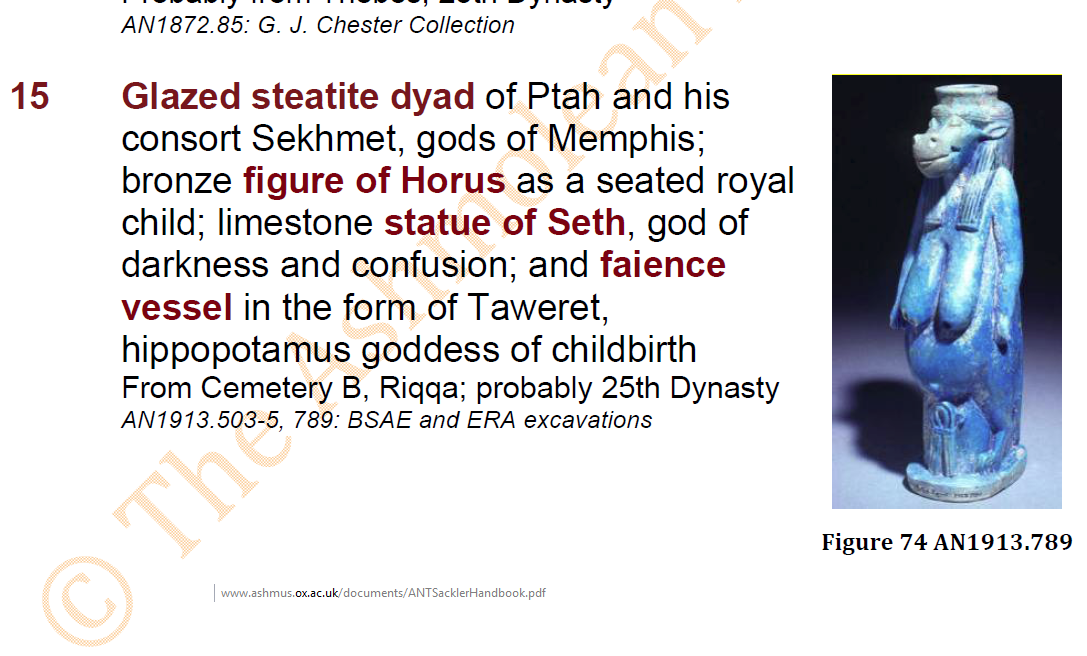
I like her grin!
The search for the Set continues. Meanwhile, I have found an alabaster figurine, about six inches tall, at the Global Egyptian Museum website, item housed at the Belgian "Les Musées royaux d'Art et d'Histoire (MRAH)"
It's in bad shape, but still recognizable:
|
